The culture of the Philippines is a vibrant fusion of indigenous traditions, colonial
influences, and modern global trends. Shaped by centuries of history, it reflects a unique blend
of Malay, Spanish, American, and Chinese heritage, creating a rich and diverse society. This
cultural diversity is evident in various aspects, including language, religion, festivals, arts,
and traditions.
Language plays a significant role in Filipino identity. While Filipino, based on Tagalog, is the
national language, the country boasts over 170 languages and dialects. English is widely spoken,
making the Philippines one of the largest English-speaking nations in Asia. This linguistic
diversity fosters communication and cultural exchange across regions.
Religion is deeply ingrained in Filipino society. With around 80% of the population being Roman
Catholic due to Spanish colonization, religious festivals and traditions play a central role in
daily life. Events like Sinulog, Pahiyas, and the grand procession of the Black Nazarene
showcase the people's deep devotion and festive spirit. Islam, practiced mainly in Mindanao, and
indigenous beliefs also contribute to the nation's religious landscape.
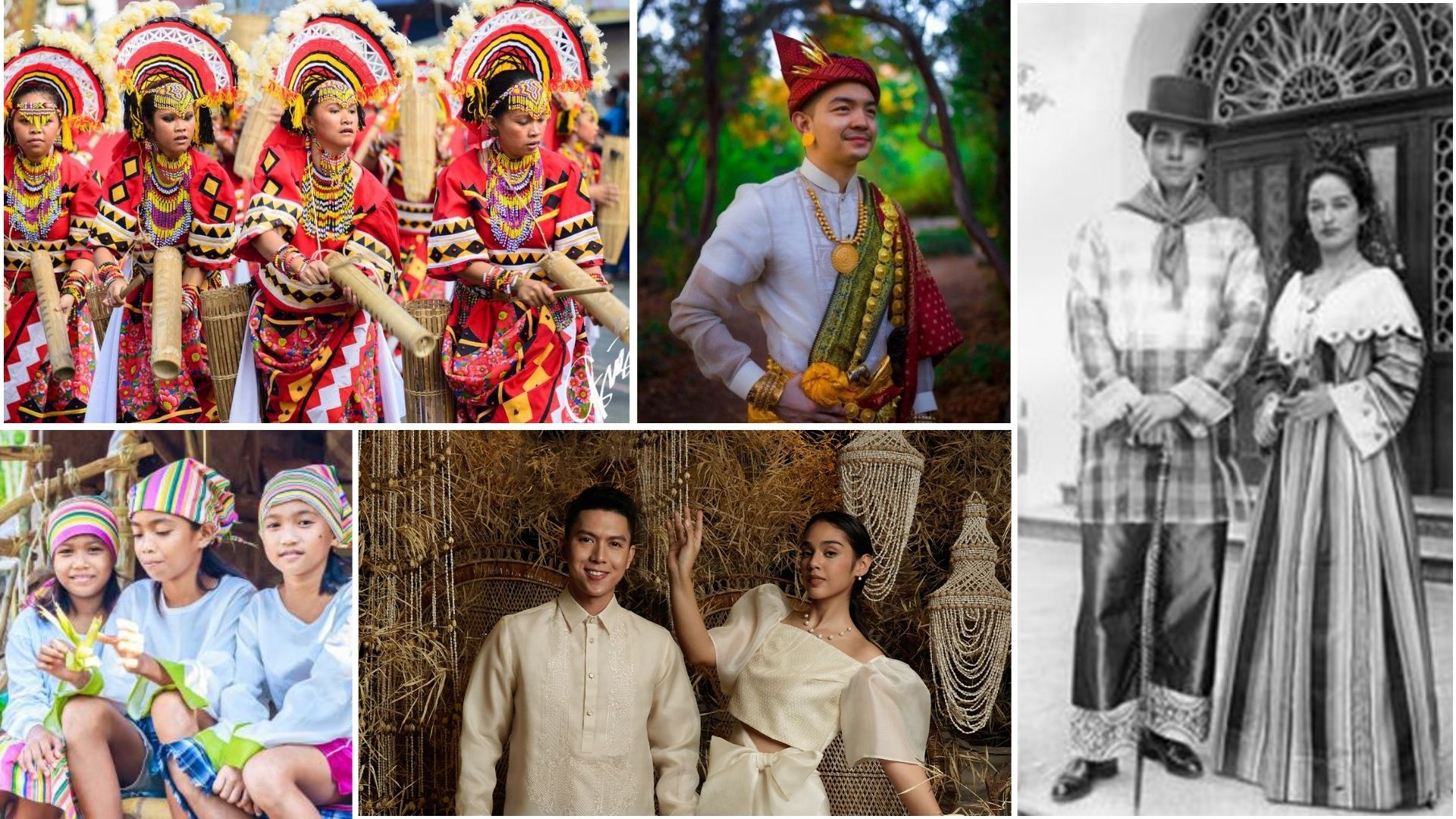
Philippines Clothing
The Philippines is an archipelagic country in Southeast Asia, consisting of over 7,600 islands.
It is known for its rich culture, diverse traditions, and stunning natural beauty. The nation
has a unique blend of indigenous, Spanish, American, and Chinese influences, reflected in its
language, cuisine, festivals, and way of life.
Filipino society is warm and welcoming, with family playing a central role. The traditional
concept of "Bayanihan," or communal unity, remains strong. The country is predominantly Catholic
due to centuries of Spanish colonization, and religious festivals like Sinulog and Pahiyas are
widely celebrated.
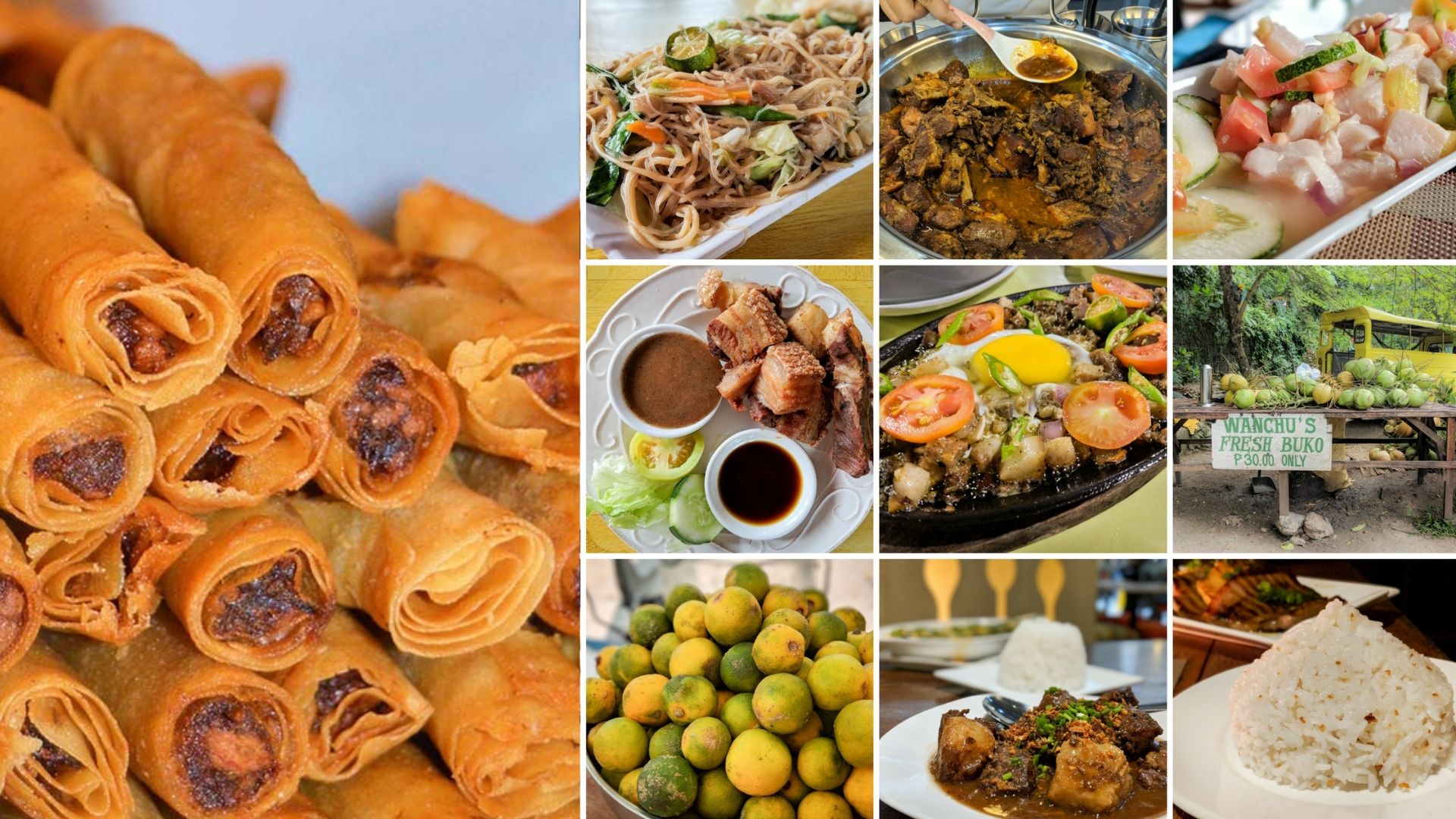
Philippines Food
The cuisine of the Philippines is a flavorful mix of indigenous, Spanish, Chinese, and American influences, creating a unique and diverse food culture. Adobo is one of the most famous Filipino dishes, made with chicken or pork marinated in vinegar, soy sauce, garlic, and spices, then simmered to perfection. It is a staple in every household. Sinigang is a sour tamarind-based soup, often cooked with pork, shrimp, or fish, and loaded with vegetables, offering a comforting and tangy taste. Lechon, a whole roasted pig with crispy skin and juicy meat, is a must-have at fiestas and celebrations. Halo-Halo is a popular dessert made with shaved ice, milk, sweet beans, fruits, and ice cream, offering a refreshing treat. Filipino cuisine reflects the nation’s rich cultural heritage and love for hearty, flavorful food.
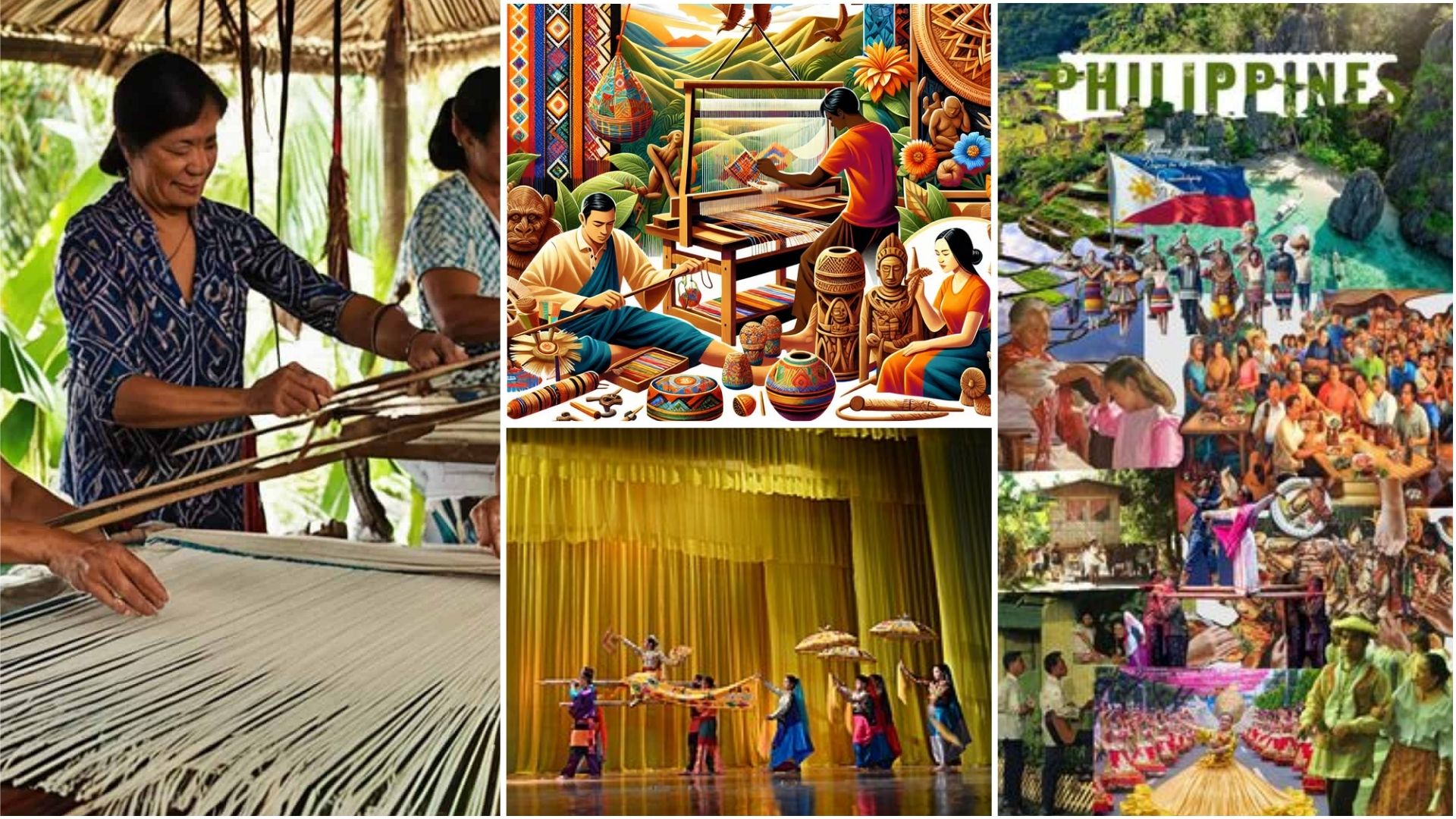
Philippines Art
The art of the Philippines is a rich and diverse reflection of the country’s cultural history and heritage. It is deeply influenced by indigenous traditions, Spanish colonialism, and modern global trends. Filipino art is expressed through various forms, including painting, sculpture, music, dance, and crafts. Traditional Filipino art includes intricate weaving, wood carving, and basketry, often depicting daily life, nature, and spirituality. Textile arts, such as the weaving of ikat and piña fabric, are highly valued for their craftsmanship.
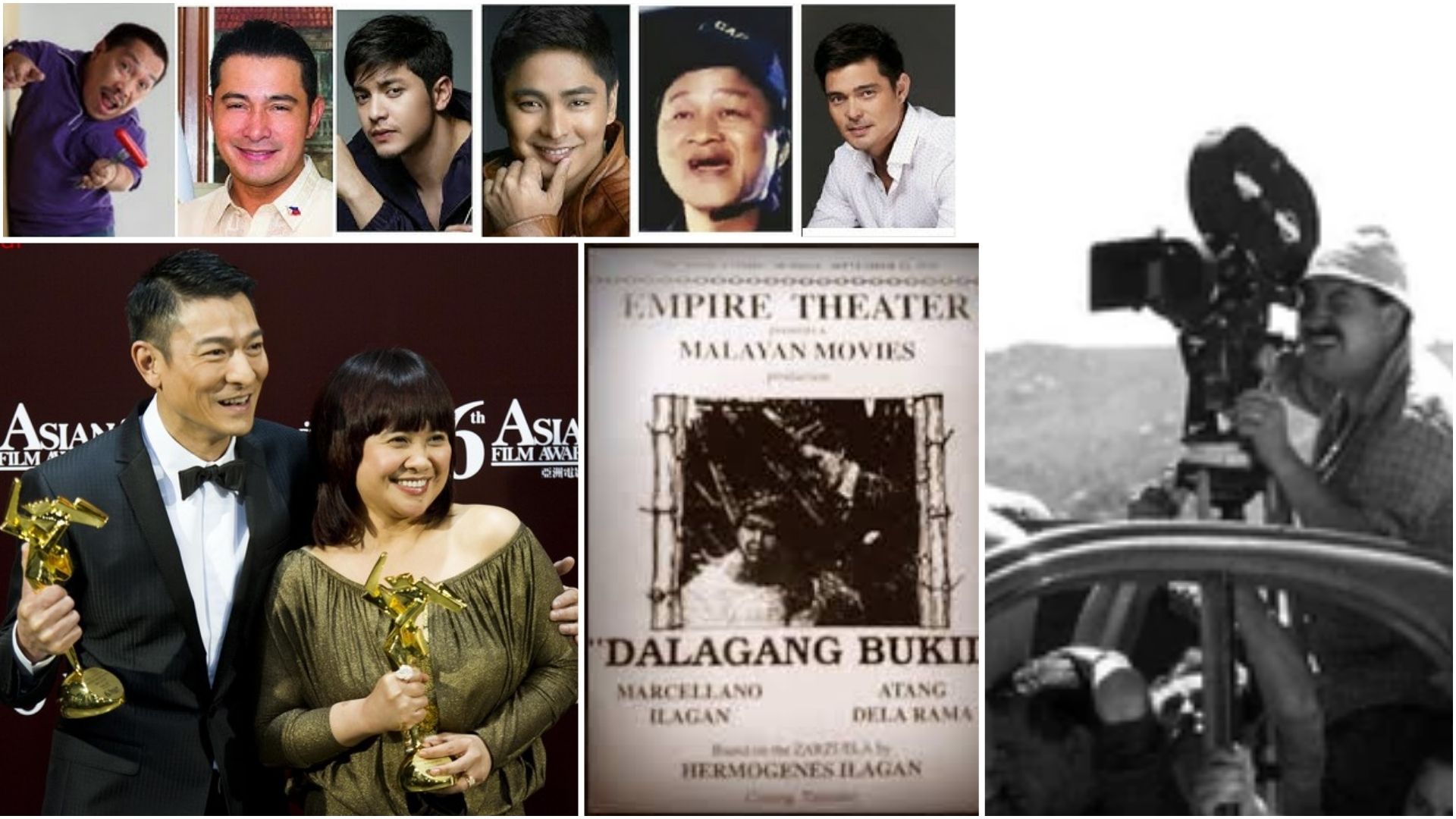
Philippines Film Industry
The Philippine film industry, known as "Philippine Cinema", has a rich history that dates back to the early 1900s and plays a significant role in the country's cultural identity. While it initially drew inspiration from Hollywood, it has since developed its own distinct style, focusing on local stories, family dramas, romance, and social issues. One of the most iconic film genres is "Romantic-Comedy", reflecting the Filipino people's love for love stories. However, dramas and action films also hold great prominence in Filipino cinema. Early pioneers like Fernando Poe Jr. helped shape the action genre, while filmmakers such as Lino Brocka revolutionized social realism with films that highlighted poverty and political struggles.
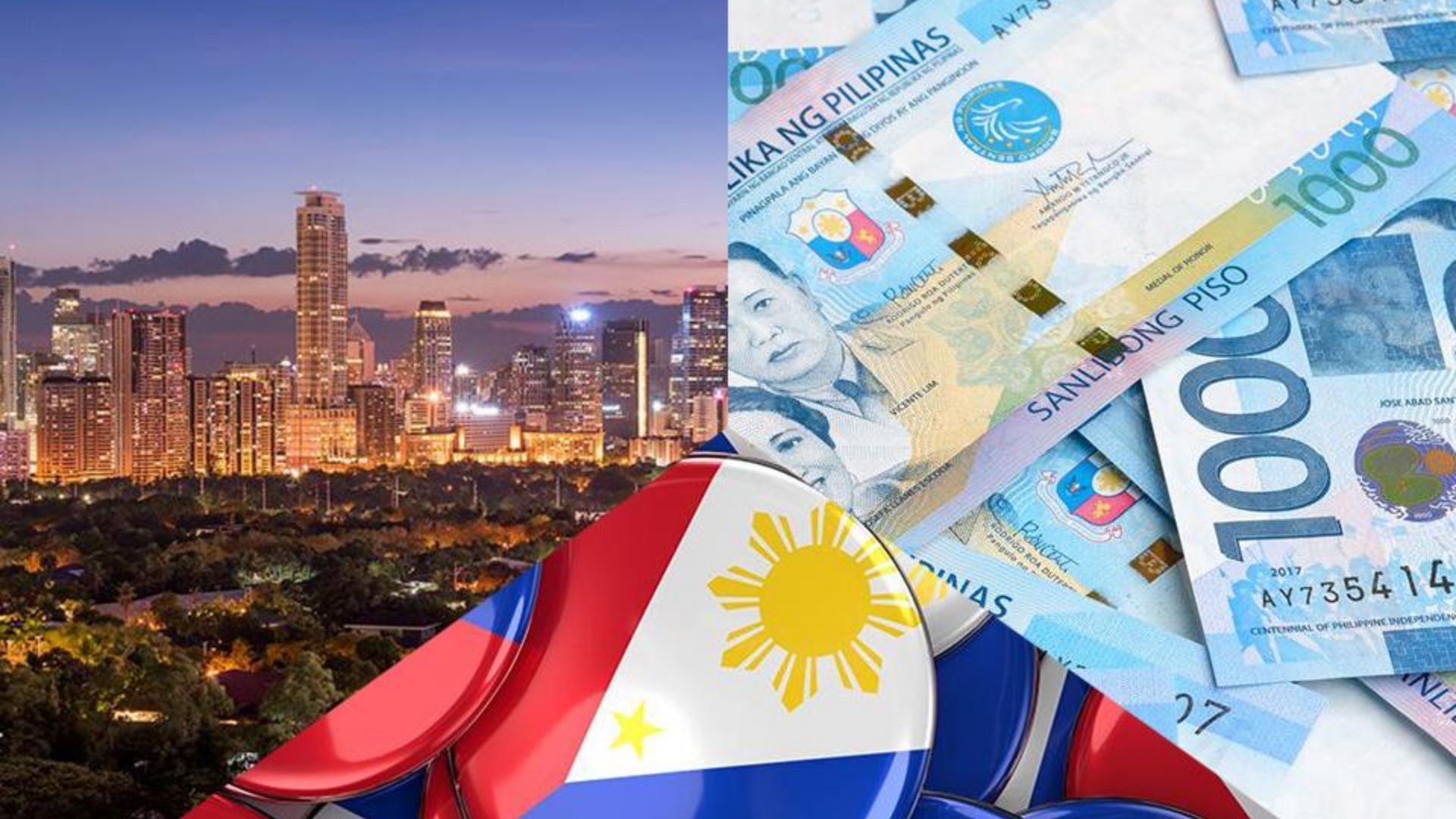
Philippines Economy
The Philippines has one of the fastest-growing economies in Southeast Asia, characterized by a diverse and dynamic economy. The country’s economy is driven by key sectors such as services, manufacturing, agriculture, and remittances from overseas Filipino workers (OFWs). The services sector, particularly the Philippines business process outsourcing (BPO) Philippines industry, has become a global leader, contributing significantly to GDP and creating millions of jobs. The Philippines manufacturing sector Philippines has also been growing, particularly in electronics, textiles, and food processing, making the Philippines a competitive player in global trade. Philippines Agriculture Philippines remains important, although it has been facing challenges like natural disasters and outdated infrastructure.